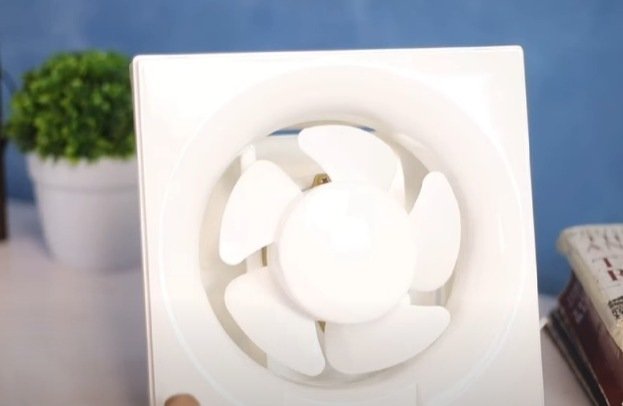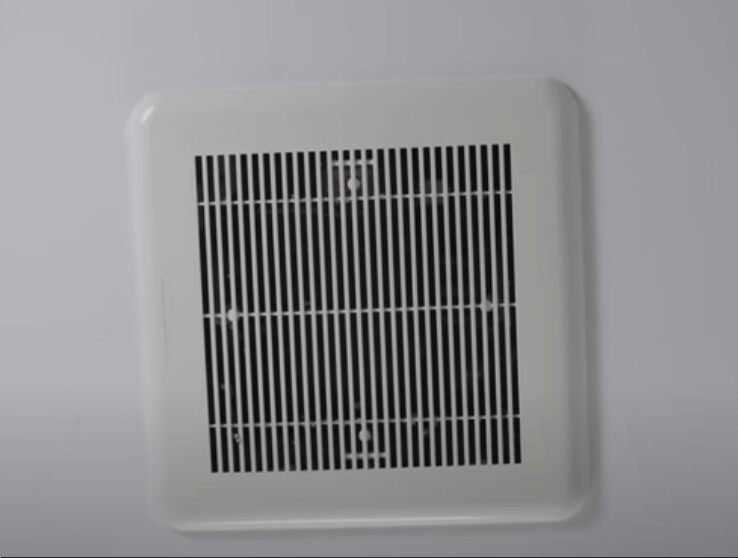Imagine stepping out of a refreshing shower, only to be greeted by a cloud of steam and a lingering dampness. This scenario highlights the crucial role of an often-overlooked hero in your bathroom: the exhaust fan.
This blog post explains the world of bathroom fans, exploring their importance, types, benefits, and considerations when choosing the right one for your space.

Why is a Bathroom Fan Important?
- Combats Moisture: Hot showers and baths generate significant moisture, which can lead to:
- Mold and Mildew Growth: Mold thrives in damp environments, posing health risks and causing unpleasant odors.
- Structural Damage: Excess moisture can damage walls, ceilings, and other bathroom elements over time.
- Improves Air Quality: Bathroom fans remove stale air and lingering odors, promoting a healthier and more pleasant bathroom environment.
- Prevents Fogging: By removing moisture-laden air, bathroom fans prevent mirrors from fogging up, ensuring clear visibility after a shower.
Table of Contents
Types of Bathroom Fans:
| Type | Description |
|---|---|
| Wall-Mounted | Common, installed in the wall, vented outside. |
| Ceiling-Mounted | Discreet, blends into the ceiling, and ventes through the roof. |
| Inline | Installed within ductwork (attic/crawl space), vented outside. |
- Wall-Mounted Fans: These are the most common type, installed directly into the bathroom wall and vented outside.
- Ceiling-Mounted Fans: Discreetly blend into the ceiling, offering a more streamlined look.
- Inline Fans: Installed within the ductwork, ideal for situations where wall or ceiling mounting isn’t feasible.
Choosing the Right Fan:
- Size Matters: Select a fan with the appropriate capacity for your bathroom size. Bigger bathrooms need fans with stronger capacity to efficiently remove moisture.
- Noise Level: Consider the noise level generated by the fan. Opt for quieter models for a more peaceful bathroom experience.
- Features: Some fans offer additional features like humidity sensors, light fixtures, and timers for added convenience.

Benefits of Installing a Bathroom Fan:
- Prevents Mold Growth: A well-functioning fan reduces moisture build-up, creating an unfavorable environment for mold and mildew to thrive.
- Protects Your Investment: By preventing moisture damage, a bathroom fan safeguards your bathroom from costly repairs and structural issues.
- Improves Air Quality: Ensures a fresh and healthy bathroom environment by removing unpleasant odors and stale air.
- Enhances Comfort: Eliminates fogged-up mirrors and creates a more comfortable post-shower experience.
| Type | Advantages | Disadvantages |
|---|---|---|
| Wall-Mounted | * Affordable | * Requires wall space |
| * Easy to install (some models) | * May disrupt existing wall finishes | |
| * Wide variety of options available | ||
| Ceiling-Mounted | * Unobtrusive design | * Requires access to ceiling cavity |
| * Ideal for limited wall space | * More complex installation compared to wall-mounted | |
| Inline | * Ideal for tight spaces or existing tile | * Requires professional installation |
| * Quieter due to remote location | * Limited control unless connected to a switch/timer |
Additional Tips:
- Run the fan during showers and baths: Ideally, turn on the fan a few minutes before showering and let it run for an additional 15-20 minutes afterward to ensure proper ventilation.
- Clean the fan regularly: Follow the manufacturer’s instructions for cleaning the fan blades and housing to maintain optimal performance.
- Consider a timer: Installing a timer on your fan ensures it runs even if you forget to turn it on or off manually.
Conclusion:
A bathroom fan is an essential element in maintaining a healthy, comfortable, and well-maintained bathroom environment. By understanding its importance, choosing the right type for your space, and following proper maintenance practices, you can ensure your bathroom stays fresh, mold-free, and enjoyable for years to come.
Frequently Asked Questions (FAQ) about Bathroom Fans:
1. How often should I run my bathroom fan?
- Ideally, run the fan during showers and baths for effective moisture removal. Turn it on a few minutes before showering and let it run for an additional 15-20 minutes afterward.
- You can also consider running the fan periodically throughout the day (especially if there’s limited ventilation) to prevent moisture build-up.
2. Can I install a bathroom fan myself?
- While some handy individuals might be comfortable tackling the installation themselves, it’s generally recommended to consult a qualified electrician or contractor.
- Electrical wiring and proper ventilation are crucial aspects, and professional installation ensures safety and code compliance.
3. What are some signs that my bathroom fan needs replacing?
- Reduced airflow: If the fan isn’t effectively removing moisture or seems sluggish, it might be nearing the end of its lifespan.
- Excessive noise: Unusually loud noises during operation could indicate worn-out components or improper installation.
- Visible damage: Signs of physical damage to the fan blades, housing, or electrical components warrant a replacement.
4. How much does it cost to install a bathroom fan?
- The cost of installing a bathroom fan varies depending on several factors:
- Labor costs: Electrician or contractor rates will influence the overall price.
- Fan type: Simpler models are generally less expensive than feature-rich options.
- Complexity of installation: Factors like existing ductwork and accessibility can affect the labor involved.
5. Are there any alternatives to bathroom fans?
- While not as effective as a dedicated exhaust fan, opening a window after showering can help remove some moisture.
- However, this approach is unreliable in colder climates and doesn’t address issues like stale air and lingering odors as effectively as a proper ventilation system.
Additional Tips:
- Invest in a timer: This ensures the fan runs even if you forget to turn it on or off manually.
- Choose an energy-efficient model: Look for fans with Energy Star certification to minimize energy consumption.
- Regular maintenance: Cleaning the fan blades and housing regularly ensures optimal performance and extends the lifespan of the unit.
By understanding these FAQs and following the provided tips, you can ensure your bathroom fan functions effectively, keeping your bathroom environment healthy and comfortable.
